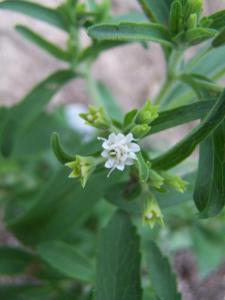The stevia plant (Stevia rebaudiana) has a long history of use as a natural, no calorie sweetener. Read More about Stevia Plants …Stevia Care
Just as with many of my Frugal Gardening Momma articles, more in depth work will be found in my upcoming book. Keep a check on my site for updates!
The stevia plant (Stevia rebaudiana) has a long history of use as a natural, no calorie sweetener. Stevia is native to the lands of North and South America most notably, Argentina, Paraguay and Brazil. With a genus of roughly 240 species, the more common S. rebaudiana is one species in a large plant family.
Its growing requirements are simple as it is an undemanding plant that is not often attacked by pests or diseases. The leaves, stems, roots and blossoms of the stevia plant can be used as sugar substitutes—though the parts of the leaf between each vein is thought to be superior as a sweetener with little to no aftertaste.
Place stevia in full sun with well-drained soils that contain a lot of organic matter. The key is to keep the soil moist until the plant is well established. Once established, stevia is drought tolerant–though it grows better if given plenty of water.
Fertilize stevia plants with organic foods such as worm castings, tea and coffee grounds, cow and chicken manure, and compost teas. Avoid the use of synthetic fertilizers whenever possible. Pinch the growing tips of each branch to promote a bushier habit and more sweet-tasting leaves. USDA zone 11—or 32 degrees fahrenheit.
